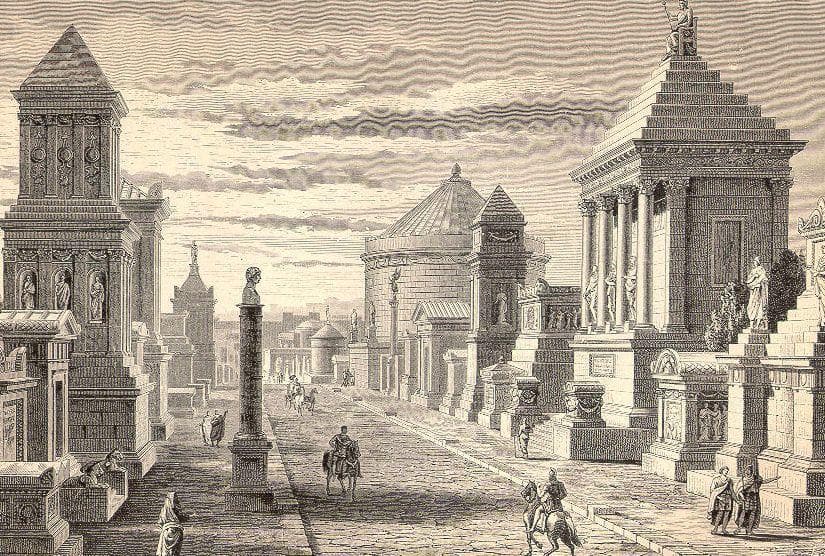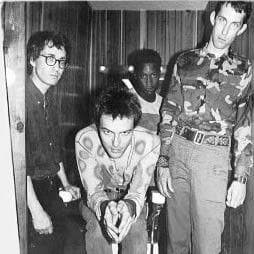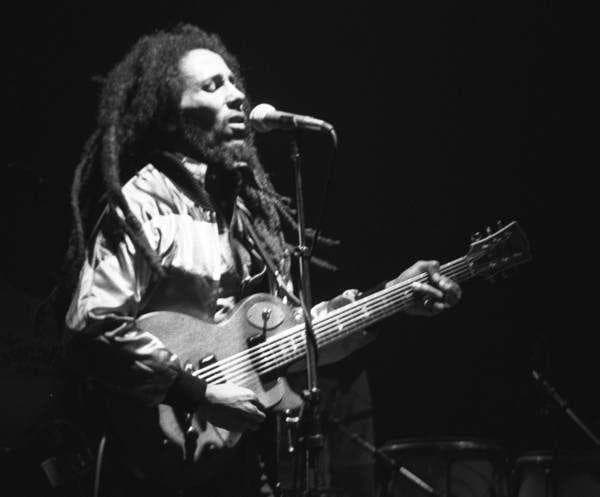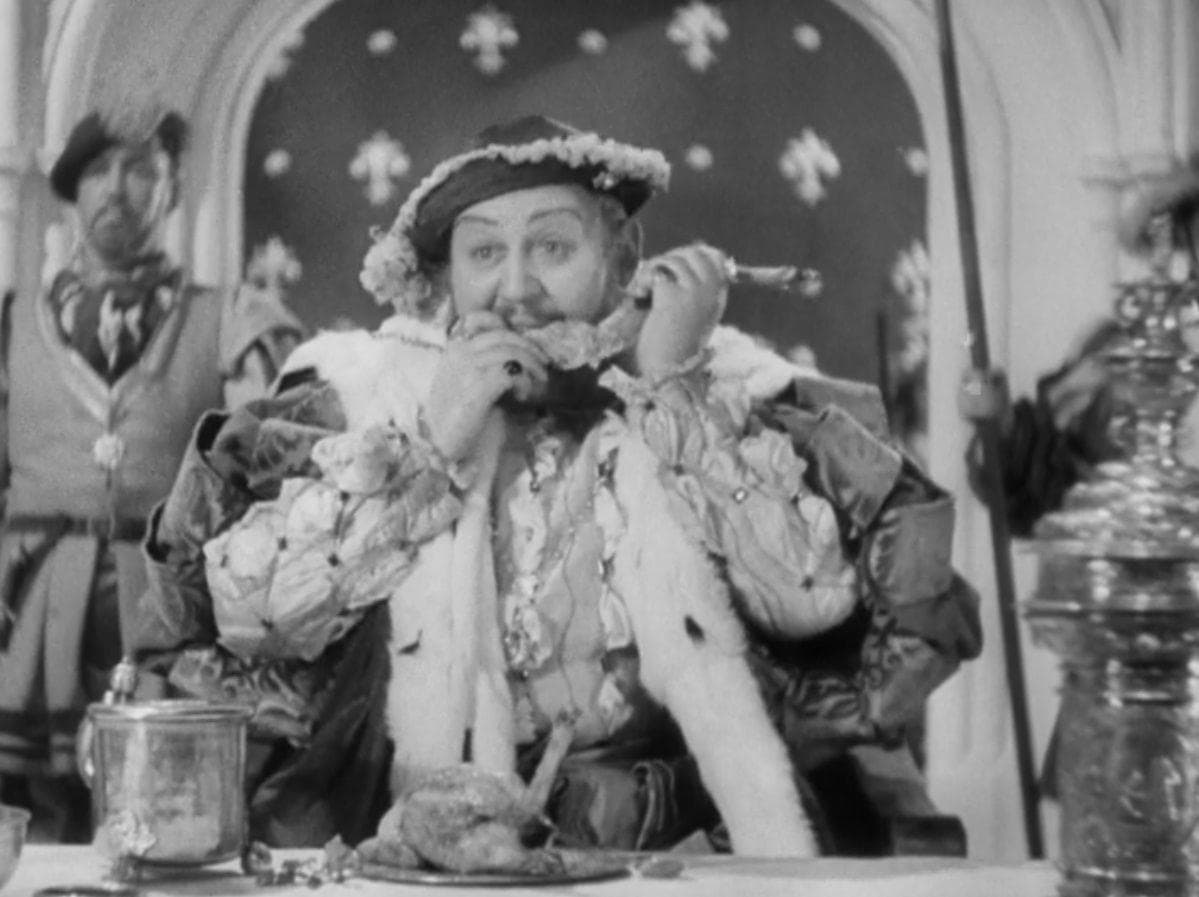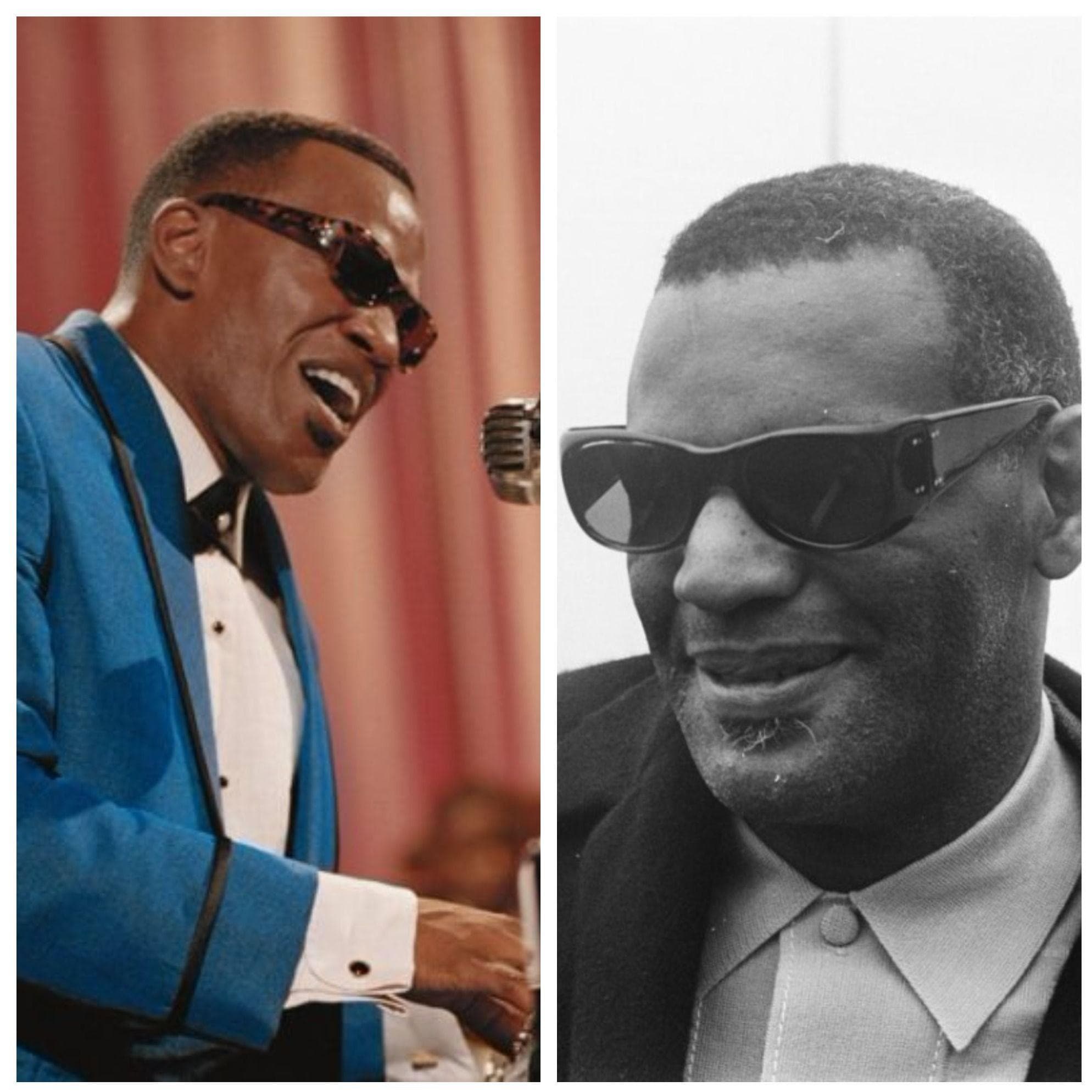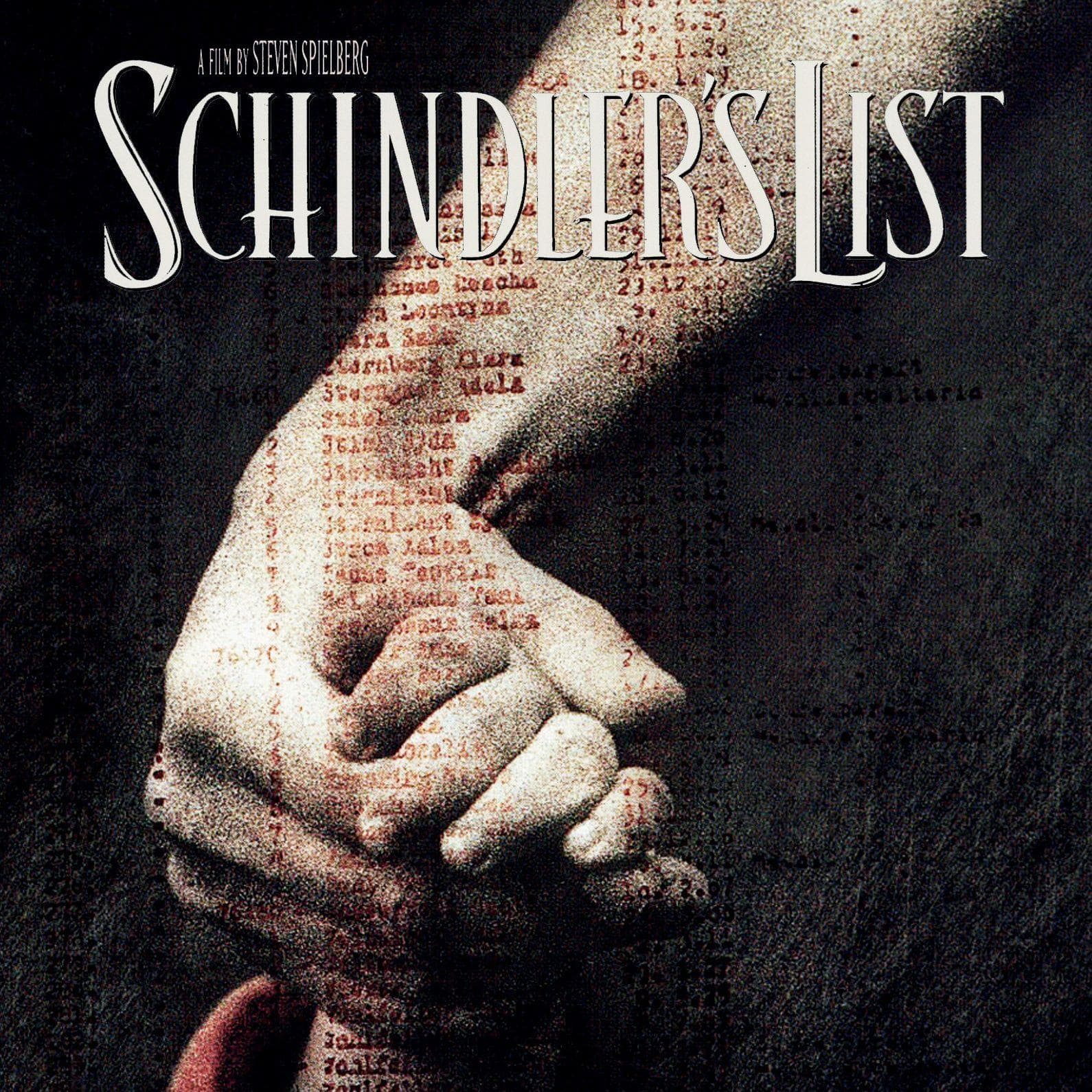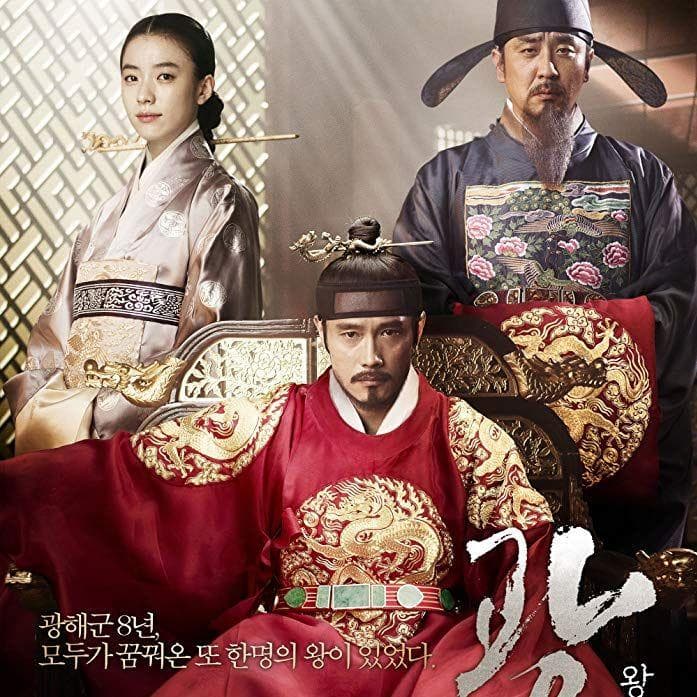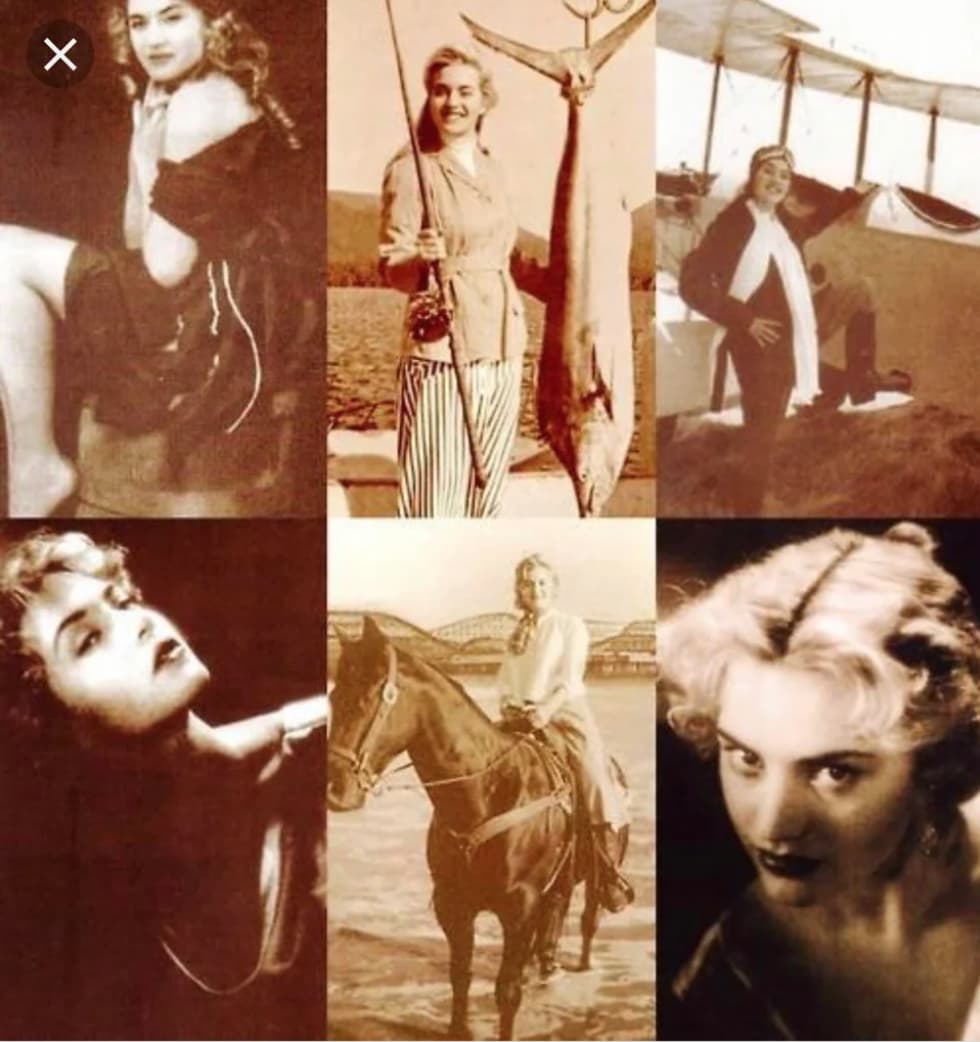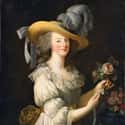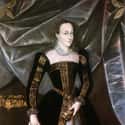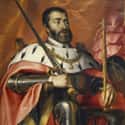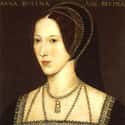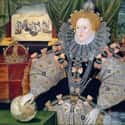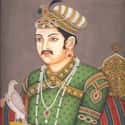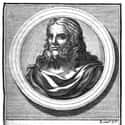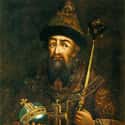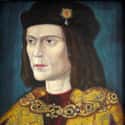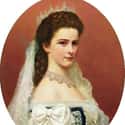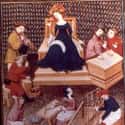-
(#1) Henry VIII of England
- Dec. at 56 (1491-1547)
By the time King Henry VIII of England perished in 1547 at the age of 55, he weighed nearly 400 pounds. But as a young man, he was heralded as an athletic, handsome ruler who embodied kingly ideals.
One eyewitness to the young king's appearance was Sebastian Giustinian, the ambassador from Venice. In 1519, he wrote that 29-year-old Henry was "extremely handsome" and that "nature could not have done more for him." He continued:
He is much handsomer than any other sovereign in Christendom; a great deal handsomer than the king of France; very fair, and his whole frame admirably proportioned. On hearing that Francis I [of France] wore a beard, he allowed his own to grow, and, as it is reddish, he has now a beard that looks like gold.
-
(#2) Marie Antoinette
- Dec. at 38 (1755-1793)
For Marie Antoinette, appearances were undeniably political matters. But no matter how much she worked to cultivate the image of a regal, extravagant queen of France, many continued to define her through her Austrian origins - a perspective that marked her as a foreigner.
Her personal hairdresser Léonard-Alexis Autié (Marie Antoinette loved a good hair style) defended his patron after her execution. After first meeting Marie Antoinette shortly after her arrival in France in 1770, Autié recalled that the young Dauphine was on the verge of becoming a truly French royal:
Marie-Antoinette was then neither beautiful, pretty, nor attractive. There were only promises of beauty in her. Her figure, well-set, slender, but disparaged by an extreme thinness, still lacked grace, without however being disfigured by that Austrian stiffness, which Her Highness had fortunately left on the banks of the Danube.
The hair of the daughter of Marie-Thérèse, which was then a pale blond, seemed to me very badly arranged; but perhaps people may think that this part of my judgment should be accepted with distrust as that of a rival Larseneur. The eyes of the Dauphine were azure blue with a quick, witty, but somewhat bold, expression.
She had a high forehead, a nose of a too pronounced aquiline shape, a small mouth, thick lips, but of great freshness, a complexion of dazzling whiteness and set off by natural but rather high color. Marie-Antoinette carried her head high; there was haughtiness in her manner, but a haughtiness tempered by a sweetness of countenance and tone which captivated at the very moment when one was about to feel offended at the pride which this kindness successfully belied.
-
(#3) Mary, Queen of Scots
- Dec. at 45 (1542-1587)
Queen Mary of Scotland did not get much praise for her politics during her reign from 1542 to 1567 - she abdicated the throne before she was 25.
Her appearance, on the other hand, was highly regarded. According to a diplomat from Venice, the queen was "personally the most beautiful in Europe." She was also tall - Mary's height was almost 6 feet.
-
(#4) Charles V, Holy Roman Emperor
- Dec. at 58 (1500-1558)
Holy Roman Emperor Charles V first reigned as king of Spain in 1516. That year, the courtier Sancho Cota described the new, 16-year-old Spanish king:
He was of medium height, with a long face, blond hair, beautiful light-blue eyes, a narrow but well-proportioned nose, his mouth and chin not as beautiful as his other features... He was a graceful man in very good shape; an upright man in his life, eating and drinking in a measured fashion, very clever for his years; liberal and magnificent and very virtuous.
Cota's description of Charles's "long face" and unattractive chin were veiled references to his so-called Habsburg Jaw, or a chin that markedly protruded. Thanks to the Habsburg dynasty's shallow gene pool - they intermarried frequently - many of the members of the royal family had this distinct physical feature.
-
(#5) Anne Boleyn
- Dec. at 35 (1501-1536)
Henry VIII created his own Protestant church so that he could divorce his first wife and marry Anne Boleyn in 1533.
But what did Boleyn - the woman who changed English history forever - actually look like? In 1532, Mario Savorgnano - a diplomat from Catholic Venice - wrote of Boleyn:
Madam Anne is not one of the handsomest women in the world, she is of middling stature, swarthy complexion, long neck, wide mouth, bosom not much raised, and in fact has nothing but the English King's great appetite, and her eyes, which are black and beautiful, and take great effect on those who served the Queen [Catherine of Aragon] when she was on the throne.
-
(#6) Elizabeth I of England
- Dec. at 70 (1533-1603)
Elizabeth I first became queen of England when she was 25 and ruled until her passing at the age of 69. Her appearance understandably changed dramatically over the course of those many decades.
Paul Hentzner, a German lawyer, visited Elizabeth's court in the late 1590s. He recalled that the 65-year-old monarch still appeared "very majestic" and, though her body had aged, she continued to ornament herself as ruler of England:
[H]er face oblong, fair, but wrinkled; her eyes small, yet black and pleasant; her nose a little hooked; her lips narrow, and her teeth black; (a defect the English seem Subject to, from their too great use of sugar) she had in her ears two pearls, with very rich drops; she wore false hair, and that red; upon her head she had a small crown, reported to be made of some of the gold of the celebrated Lunebourg table; her bosom was uncovered, as all the English ladies have it, till they marry; and she had on a necklace of exceeding fine jewels; her hands were small, her fingers long, and her stature neither tall nor low; her air was stately, her manner of speaking mild and obliging.
-
(#7) Akbar
- Dec. at 63 (1542-1605)
Emperor Akbar I - known as Akbar the Great - ruled over the Mughal Empire for nearly half a century. Born in 1542, he was only 14 when he became emperor.
Antonio Monserrate, a Jesuit missionary to Akbar's court, recorded his impressions of the Mughal royal in the 1580s:
The King is of good stature, sturdy of body, arms and legs, broad-shouldered. The configuration of his face is ordinary, and does not reflect the grandeur and dignity of the person because, besides being Chinese-like as the Mughals usually are, it is lean, sparse of beard, wrinkled and not very fair. The eyes are small but extremely vivid... and they also reveal sharpness of mind and keenness of intellect.
-
(#8) Theodoric II
The reign of Visigothic King Theodoric II began and ended with fratricide: He dispatched his brother to take the throne in 453 AD, and his reign ended in 466 when another brother "succeeded" him in the same way.
Considering the bloodshed that bookended his rule, Theodoric appropriately appeared like an imposing figure. In a letter from 454, the Gallo-Roman diplomat Sidonius Apollinaris described the king in detail:
He is well set up, in height above the average man, but below the giant. His head is round, with curled hair retreating somewhat from brow to crown. His nervous neck is free from disfiguring knots. The eyebrows are bushy and arched; when the lids droop, the lashes reach almost half-way down the cheeks. The upper ears are buried under overlying locks, after the fashion of his race. The nose is finely aquiline; the lips are thin and not enlarged by undue distension of the mouth.
Every day the hair springing from his nostrils is cut back; that on the face springs thick from the hollow of the temples, but the razor has not yet come upon his cheek, and his barber is assiduous in eradicating the rich growth on the lower part of the face. Chin, throat, and neck are full, but not fat, and all of fair complexion; seen close, their colour is fresh as that of youth; they often flush, but from modesty, and not from anger.
His shoulders are smooth, the upper- and forearms strong and hard; hands broad, breast prominent; waist receding. The spine dividing the broad expanse of back does not project, and you can see the springing of the ribs; the sides swell with salient muscle, the well-girt flanks are full of vigour. His thighs are like hard horns; the knee-joints firm and masculine; the knees themsleves the comeliest and least wrinkled in the world. A full ankle supports the leg, and the foot is small to bear such mighty limbs.
-
(#9) Doña Isabel de Castilla I, Queen Isabella I
Isabella I became queen of Castile in 1474, when she was around 23 years old. As described by Fernando del Pulgar in the 1470s, around the time of Isabella's ascension:
This queen was of medium height, well put together in her person and the proportion of her limbs, very pale and blonde. The eyes were between green and blue, her look is honest and graceful, her features well arranged and her face beautiful and full of joy. She was very measured in her bodily movements; she didn't drink wine; she was a very good woman who liked to be surrounded by good, elderly women of fine lineage.
This wasn't just a description of her physical features. Pulgar used her radiant appearance to describe her character and virtues as queen.
-
(#10) Ivan the Terrible
- Dec. at 54 (1530-1584)
Ivan IV - nicknamed Ivan the Terrible - is remembered for exhibiting paranoia and ruthlessness while he ruled as czar of Russia from 1547 to 1584. Two descriptions of Ivan reveal an imposing figure. According to Austrian ambassador Daniel von Buchau, who visited Ivan's court in the 1570s:
He is very tall. His body is full of strength and quite thick, the large eyes that constantly run around him are watched carefully. His beard is red with a slight shade of blackness, quite long and thick, but the hair on the head, like most Russians, [he] shaves with a razor.
Ivan Mikhailovich Katyrev-Rostovsky - husband of Ivan's daughter - characterized the czar in more explicit terms:
Tsar Ivan was ugly in his appearance. His nose was long and sloppy. Tall, lean, he was at the same time broad-shouldered and muscular.
-
(#11) Richard III of England
- Dec. at 33 (1452-1485)
Popular memory imagines Richard III as William Shakespeare depicted him: a hunchback whose crooked spine evidenced his crooked character. Given that Shakespeare was a dramatist born several decades after Richard's passing in 1485, his description of Richard should not be taken as accurate. While the recent discovery of Richard's remains in an English parking lot have proved that he did in fact suffer from scoliosis, Richard likely was not the malformed monster that Shakespeare conjured.
So what did he really look like? According to Nicolas von Poppelau, who met Richard in May 1484:
Richard was three fingers taller than [my]self, but a little slimmer and not so solid, also far leaner; he had delicate arms and legs, and also a great heart.
To Poppelau, Richard's physical features - slender and elegant - mirrored his gracious personality.
-
(#12) Catherine II of Russia
- Dec. at 67 (1729-1796)
German-born Catherine the Great became empress of Russia when she was 33 in 1762. As famous for her romantic life as for her political maneuvers, Catherine was a force of nature.
According to William Richardson, a British visitor to her court in the 1760s, the late-30-something empress made an impression:
The Empress of Russia is taller than the middle size, very comely, gracefully formed, but inclined to grow corpulent; and of a fair complexion, which, like every other female in this country, she endeavours to improve by the addition of rouge. She has a fine mouth and teeth; and blue eyes, expressive of scrutiny, something not so good as observation, and not so bad as suspicion. Her features are in general regular and pleasing. Indeed, with regard to her appearance altogether, it would be doing her injustice to say it was masculine, yet it would not be doing her justice to say, it was entirely feminine.
-
(#13) Empress Elisabeth of Austria
- Dec. at 61 (1837-1898)
Sixteen-year-old Elisabeth of Bavaria stepped onto the world stage when she married 24-year-old Franz Joseph, Emperor of Austria, in 1854. She quickly became the toast of Europe, thanks to her dazzling beauty. According to an American official in Vienna, the empress was:
[A] miracle of beauty - tall and slender, with a wonderfully lovely figure, an abundance of light brown hair, a low Grecian forehead, soft eyes, very red lips, and a sweet smile.
Elisabeth's beauty became legendary - and a magnet in Viennese society. According to the Viennese minister of police, "The beauty of Empress Elisabeth draws many people to the court who would otherwise stay away."
-
(#14) Mehmed the Conqueror
- Dec. at 49 (1432-1481)
Mehmed II became the Ottoman sultan when only 12 - and he would keep stacking up achievements. At 21, Mehmed captured the city of Constantinople, bringing a final end to the millennium-old Byzantine Empire. From there, he pushed deeper into Europe, earning the sobriquet "The Conqueror."
The Venetian diplomat Giacomo de' Languschi described the royal shortly after his conquest of Constantinople:
The sovereign, the Grand Turk Mehmed Bey, is a young man of 26 years of age, well formed and of a stature rather above the average. He is skilled in the use of weapons. His appearance inspires fear rather than respect. He laughs rarely, is cautious in his judgments, and is endowed with great generosity. He shows great tenacity in all his undertakings, and bravery under all conditions. He aspires to equal the glory of Alexander the Great, and every day has histories of Rome and other nations read to him.
-
(#15) Eleanor of Aquitaine
- Dec. at 82 (1122-1204)
At the peak of her power in the 12th century, Eleanor of Aquitaine was known as one of the best patrons of poets and artists in Europe. So it isn't surprising that the cultivator of "courtly love" poetry was also described in courtly terms.
According to troubadour Bernard de Ventadour, Eleanor was "gracious, lovely, the embodiment of charm." She also possessed "lovely eyes and [a] noble countenance," as befits a queen.
New Random Displays Display All By Ranking
About This Tool
Today, photography has become an art, and photography is also the most important carrier of historical resources. Long before photography was invented, members of the royal family would commission royal painters to draw portraits for different reasons. Some members of the royal family are the most well-known historical figures, thanks to the famous historical portraits, their images are widely spread.
Fortunately, some precious paintings were well preserved as first-hand descriptions. We can know that portraits were usually single-art style a few centuries ago. The random tool shows 15 firsthand descriptions of historical royals that are relatively accurate.
Our data comes from Ranker, If you want to participate in the ranking of items displayed on this page, please click here.

